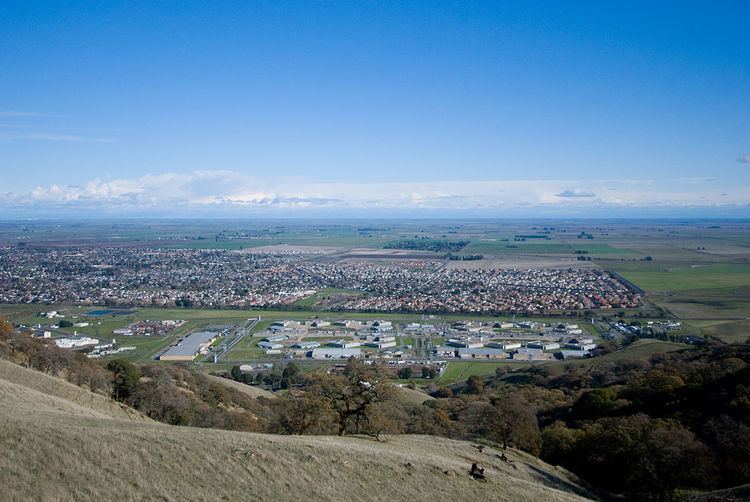Security class Minimum to medium Phone +1 707-448-6841 Opened 1955 | Status Operational Warden Robert W. Fox Capacity 2,297 | |
 | ||
Population 2,349 (102.3%) (as of 31 December 2012) Address 1600 California Dr, Vacaville, CA 95687, USA Hours Open today · Open 24 hoursMondayOpen 24 hoursTuesdayOpen 24 hoursWednesdayOpen 24 hoursThursdayOpen 24 hoursFridayOpen 24 hoursSaturdayOpen 24 hoursSundayOpen 24 hours Similar NorthBay Medical Center, Vacaville Psychiatric Program, Kaiser Permane Vacaville, Community Medical Centers, Solano County WIC Prog | ||
Life in prison california medical facility
California Medical Facility (CMF) is a male-only state prison medical facility located in the city of Vacaville, Solano County, California. It is older than California State Prison, Solano, the other state prison in Vacaville.
Contents
- Life in prison california medical facility
- California medical facility mental health unit
- Facilities
- History
- Notable inmates
- References
California medical facility mental health unit
Facilities
CMF's facilities include Level I ("Open dormitories without a secure perimeter") housing, Level II ("Open dormitories with secure perimeter fences and armed coverage") housing, and Level III ("Individual cells, fenced perimeters and armed coverage") housing.
With a "general acute care hospital, correctional treatment center (CTC), licensed elderly care unit, in-patient and out-patient psychiatric facilities, a hospice unit for terminally ill inmates, housing and treatment for inmates identified with AIDS/HIV, general population, and other special inmate housing," it is known as "the [California] prison system's health care flagship" and "has many of its best clinical programs." CMF has the largest hospital among California prisons. Furthermore, "the Department of State Hospitals operates a licensed, acute care psychiatric hospital within CMF."
In 2005, CMF had 506 medical staff positions (many of which were not filled) and a health care budget of $72 million. As of Fiscal Year 2006/2007, CMF had a total of 1,853 staff and an annual budget of $180 million. As of September 2007, it had a design capacity of 2,179 but a total institution population of 3,047, for an occupancy rate of 139.9 percent.
History
CMF opened in 1955. Among other programs at CMF, the Blind Project began in 1960. Inmates who participate in the project create audiobooks, transcribe books into Braille, clean and repair Perkins Brailler machines, and resurface eyeglasses.
In 1960 as a cooperative effort between the community, staff and inmates at CMF the Volunteers of Vacaville was founded. The goal of this organization was to transcribe books onto audio tape for the blind community outside of the prison. The "Blind Project" has since grown into a nationally and internationally recognized leader in blind services, including the transcription of printed material into braille, the recording of custom audiobooks, and the repair of Perkins Braille Writers (the typewriters used by the blind).
In 1984, the California prison system's first AIDS case was treated at CMF, and later "the system's first specialized AIDS facilities" were developed there.
In the late 1980s and early 1990s, the quality of medical care at CMF was found to be lacking, as evidenced by the following:
In 1996 at CMF, "a 17-bed, state-licensed hospice began caring for dying inmates" which was the first hospice among California prisons. Due to an increasing population of elderly at CMF, a nursing home with 21 beds opened in September 2005 "as a pilot program."
